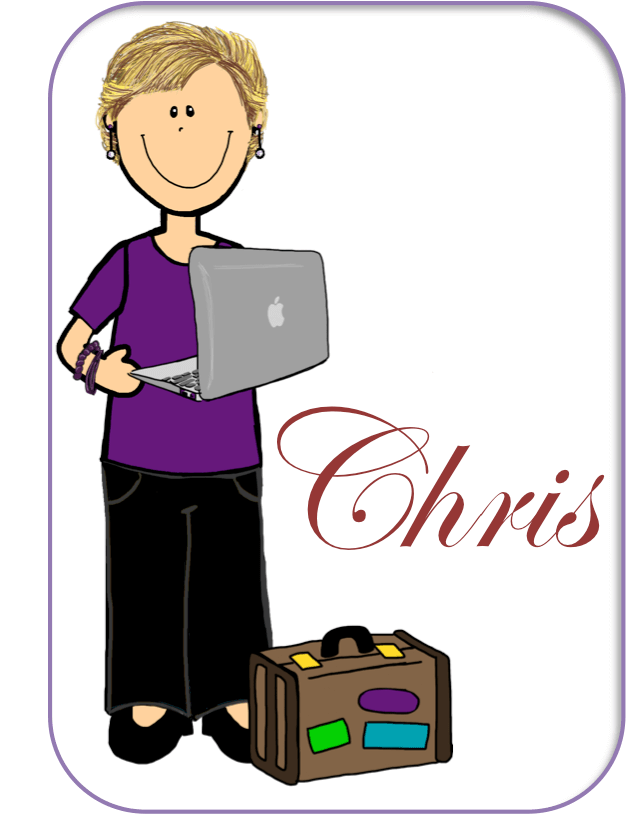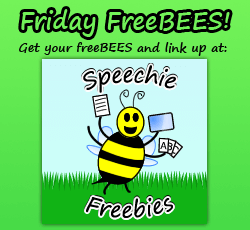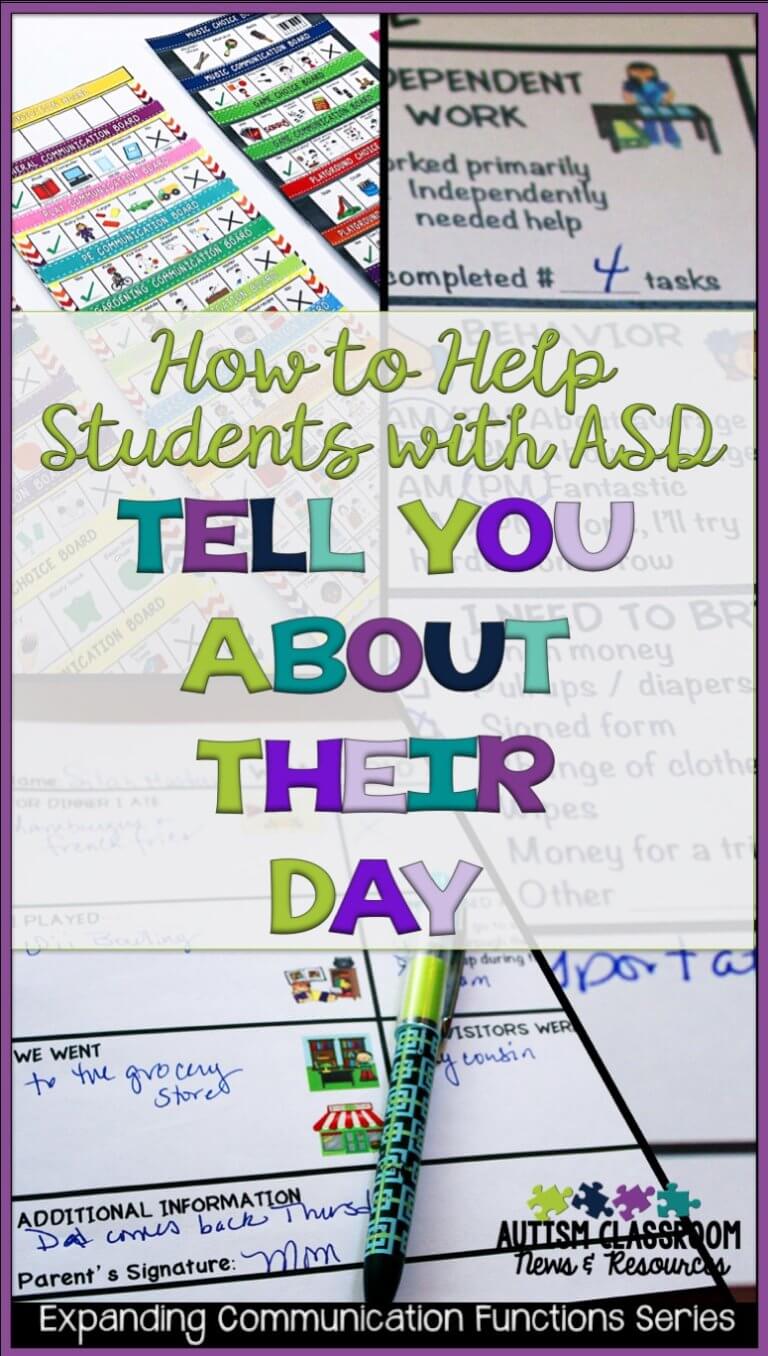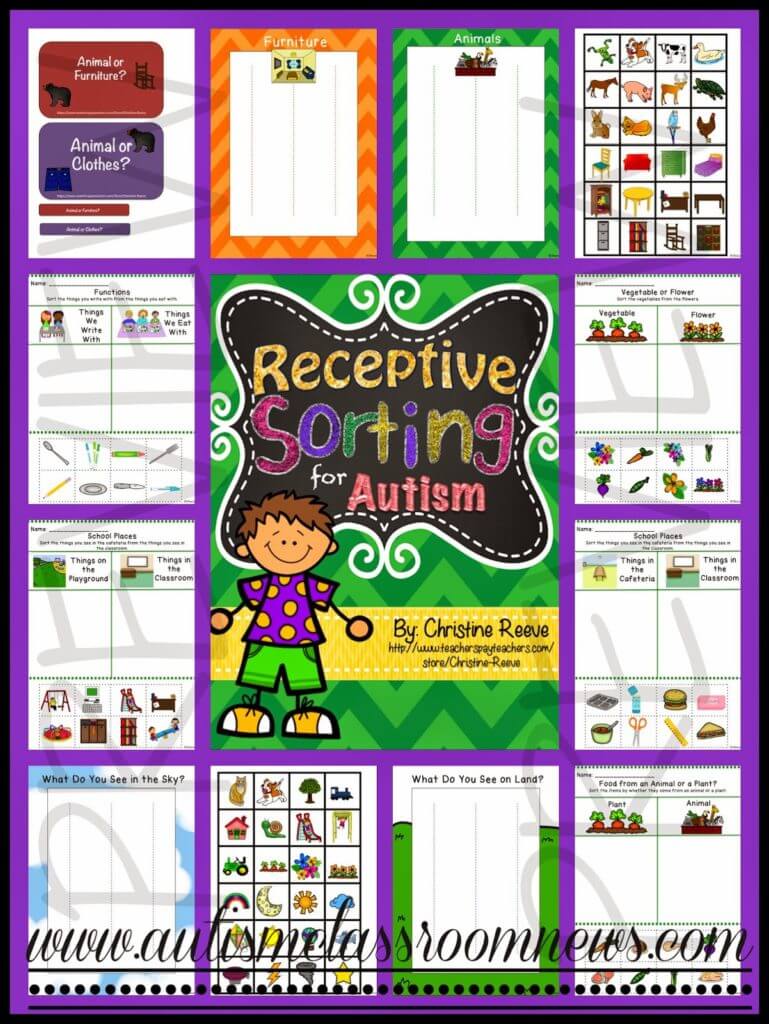 In my last post and the one before that, I’ve talked about receptive vocabulary and how to help students learn in ways that are fun and functional. In this one I want to introduce a new product, share a couple more ideas of how to teach vocabulary in fun ways. And I want to tell you how to get a free sample.
In my last post and the one before that, I’ve talked about receptive vocabulary and how to help students learn in ways that are fun and functional. In this one I want to introduce a new product, share a couple more ideas of how to teach vocabulary in fun ways. And I want to tell you how to get a free sample.
Students with autism and other language delays and disorders need explicit instruction in vocabulary beyond simply naming items. One way that we address this is to work on receptive and expressive characteristics of items and actions. Specifically we work on features (i.e., adjectives like color, size etc.), function (i.e., what we use it for) and class (i.e., categories it can fall into). This set of activities was developed to help students practice these skills in a variety of ways in addition to the explicit instruction of them. Teaching vocabulary using a variety of materials and interventions is important to assure that students generalize their skills.
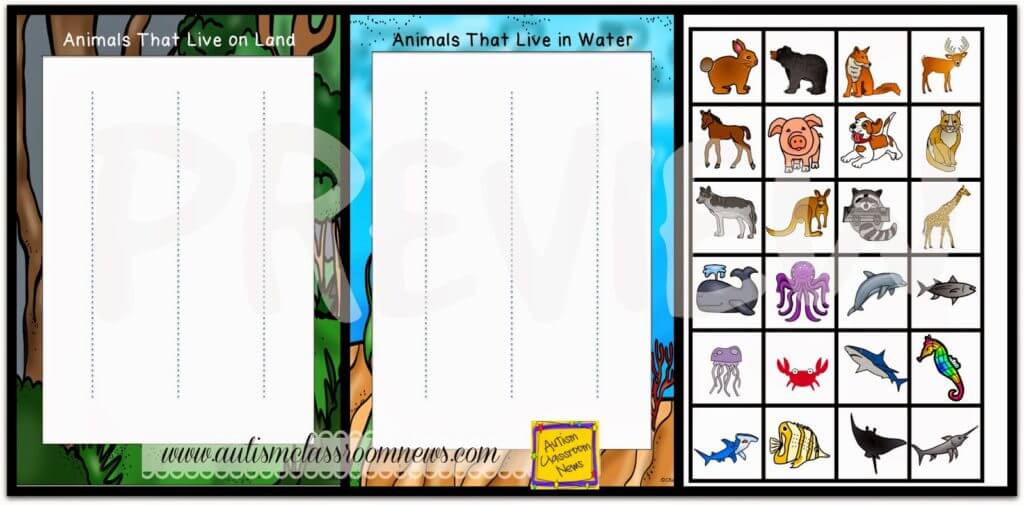
This product includes 7 file folder (or 14 single-page) sorting activities (like the one above) that are designed to be laminated and reused. Labels are provided at the end of this package for use with file folders. For each these, the 2 background pages can be mounted on the inside of the file folder and laminated. Or you can laminate them as pages and keep them in a binder. This would allow you to mix and match the categories that are being sorted or have the student sort across multiple categories (e.g., clothes, animals, food and furniture).
The following are the file folders included:
•Animals that live on land and in the water
•What do you see in the sky and What do you see on land
•What do you see in the Ocean and What do you see in the sky
•What belongs at the beach and what belongs in the classroom
•What belongs on the playground and what belongs in the classroom
•Sorting Animals, furniture, clothes, and food —these can be set up as 2 file folders, as 4 separate binder pages to increase the field of sorting up to 4, or could be printed several times to develop 6 file folders of 2-category sorting of: animals / furniture; animals / clothes; animals / food; furniture / clothes; furniture / food; clothes / food

There are also 22 sorting worksheets (like the 3 above) in which students can cut and paste items into the appropriate column. Generally there are 2 worksheets for each of the concepts of the file folder combinations. Each worksheet has a picture cue about what type of items should be placed in each box. The worksheets are provided in color but all print quite well in black and white if you are conserving color ink. They also will photocopy well. These worksheets are designed to provide permanent products / work samples to demonstrate mastery of the sorting skills. However, they could also be put in file folders and laminated with Velcro to be reusable.
Within the tasks I tried to focus on common categories, places and vocabulary that would be relevant for most students. These should work equally well for older and younger learners. You can
check out the new file folder tasks in my TPT store here or by clicking on the picture above.
A couple more ideas came to me as I was thinking about vocabulary instruction. I’m always looking for ways to make it more interesting and fun when teaching vocabulary because it’s such a focus of earlier programming for kids with autism that it can easily become repetitive and rote and therefore not fun and functional (sometimes I think I should have called this blog Fun and Functional!).
- Given that it’s Easter season and I am a huuuuge fan of the plastic eggs that come with it to teach so many different skills, you could teach vocabulary using them in a couple of ways. Put pictures or small items representing the vocabulary in the eggs and have the students open them and name them. Any they don’t get, they have to put back into the pile. You could do something similar but hide the eggs around the room and have them hunt for them. You can also use them to teach receptive colors by having them find particular color eggs or size if you can find the big ones and small ones.
- Another great way is to use iPad apps. While apps are not a substitute for explicit instruction, they can be a great way to augment vocabulary instruction. It just so happens that Speechy Musings just did a GREAT review of a variety of apps from I Can Do that work on just these concepts. Check out her review HERE.
And now, for the freebie….if you go to my TPT store for the new file folder activities
described above, and download the preview of the activities, you will get a free sorting worksheet from the product as part of the preview. Next time I’ll talk about expressive vocabulary. What other ways do you have for making vocabulary learning fun? Have any good apps to share? Please share your ideas in the comments!
Until next time,
Check out these sites for more great freebies!


 In my last post and the one before that, I’ve talked about receptive vocabulary and how to help students learn in ways that are fun and functional. In this one I want to introduce a new product, share a couple more ideas of how to teach vocabulary in fun ways. And I want to tell you how to get a free sample.
In my last post and the one before that, I’ve talked about receptive vocabulary and how to help students learn in ways that are fun and functional. In this one I want to introduce a new product, share a couple more ideas of how to teach vocabulary in fun ways. And I want to tell you how to get a free sample.



